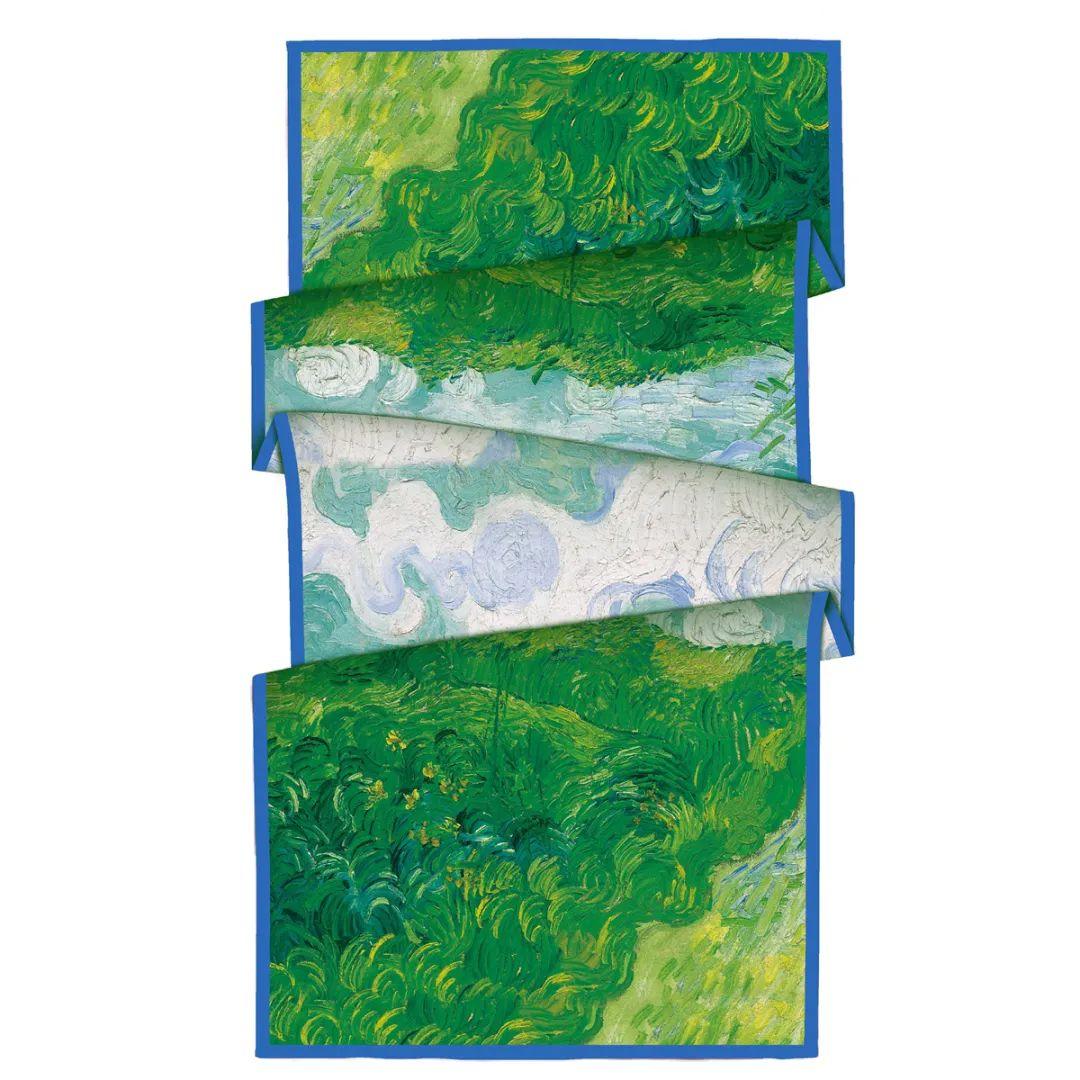Gzhel scarves are significantly different from Chinese blue print scarves, celadon scarves, and tie-dye scarves in terms of design style, production process, and cultural background. The following is a detailed comparison of these scarves:
1. Gzhel Scarf
Design style:
Patterns: Mainly blue and white floral and geometric patterns, simple and traditional.
Colors: Blue and white, the overall design is fresh and elegant.
Craftsmanship:
Inspiration: The Gzhel scarf is inspired by the traditional Russian Gzhel ceramics, where the blue and white motifs commonly found in ceramics are transferred to textiles.
Craftsmanship: Printing techniques are common, but there are also hand-painted elements.
Cultural Background:
Origin: Gzhel craftsmanship originated in the Moscow region of Russia in the 18th century and is an important part of Russian national culture.
Symbolism: The Gzhel pattern represents the traditional aesthetics of Russian art and craft.
2. Chinese Blue Print Scarf
Design Style:
Pattern: Flowers, birds and animals, geometric patterns, etc. are printed with blue dye on white fabric, the pattern is delicate and traditional.
Color: The classic combination of blue and white has a strong ethnic flavor.
Craftsmanship:
Craft Characteristics: Using batik or pinch-valve process, the fabric is partially masked and then dyed to create a unique blue and white pattern.
Material Selection: Cotton is traditionally used, and in modern times silk and other high-grade fabrics are also used.
Cultural Background:

Origin: Blue printed fabric originated in the southern region of China, has a history of hundreds of years, is a traditional Chinese folk craft.
Symbolism: It represents traditional Chinese handicrafts and village life culture.
3. Chinese blue and white porcelain scarf
Design style:
Pattern: Inspired by traditional Chinese blue and white porcelain, the scarf is decorated with the typical floral, landscape, bird and animal patterns of blue and white porcelain.
Color: Blue and white as the main, contrasting colors and fine patterns.
Craftsmanship:
Inspiration: Inspired by the Chinese blue and white porcelain of the Ming and Qing Dynasties, the design of the Celadon Scarf applies the classic patterns of porcelain to textiles.
Technological features: Mostly adopts high-precision printing technology, sometimes also adopts hand-painting technology.
Cultural Background:
Origin: Blue and white porcelain is an important category of Chinese porcelain, originating in the Tang and Song dynasties and reaching its peak during the Ming and Qing dynasties.
Symbolism: The blue and white porcelain pattern represents the cultural and artistic achievements of ancient China.
4. Chinese Tie-Dye Scarf
Design style:
Patterns: Hand-dyed to form natural and irregular patterns, unique and varied patterns.
Color: Various colors, blue, red, green, etc. are used, with natural color transition.
Production process:
Process characteristics: Dyeing the fabric after partially covering it by tying, sewing, binding, etc. to form irregular dyeing patterns.
Material selection: Natural materials such as cotton and silk are usually used.
Cultural background:
Origin: Tie-dyeing has a long history in China, and is especially popular in Yunnan, Guizhou and other ethnic minority areas.
Symbolism: Tie-dye patterns represent the culture and handicraft traditions of China's ethnic minorities.
Conclusion
While there are similarities in color and some design elements between the Gzhel scarf and the Chinese blue-print, celadon and tie-dye scarves, they represent different cultural and artistic traditions, with the Gzhel scarf reflecting Russian ceramic art, and the Chinese scarves demonstrating their own unique dyeing and patterning techniques. Each scarf has its own unique aesthetic value and cultural significance.


